From the tumultuous reign of Henry VIII to the glory of Elizabeth I, artists working in England during the 16th century became experts at composing flattering images of wealthy patrons. This article will explore many of the famous names associated with the Tudor dynasty, as well as many who saw great political, social and royal upheaval as they worked into the early 17th century.
 Above: a selection of 16th century portraits
Above: a selection of 16th century portraits
Hans Holbein the Younger (1497-1543)
One of the most celebrated of the old masters, Holbein is known for his English portraits of Henry VIII and his troubled court. Originally from Germany, his work has influences of the late Gothic period and Northern Renaissance.
After returning to England in the 1530s, Holbein was met with royal turmoil as Henry VIII divorced Catherine of Aragon. Quickly finding favour in the circle of Anne Boleyn and the King’s new secretary Thomas Crowwell, some of his most famous works of art were composed over this period, such as the The Ambassadors in 1533.
 Above: three portraits by Holbein and his workshop
Above: three portraits by Holbein and his workshop
However, in 1539 Holbein was tasked with a portrait of Anne of Cleves, a famously flattering depiction that led to the downfall of Cromwell and many of his allies. Holbein died aged 45 in London, the location of his grave is unknown – most likely because he was a victim of the plague.
Susannah Horenbout (1503-1554) and Lucas Horenbout (1490-1544)
Horenbout or Hornebolte were artists with Flemish origins. Susannah is noted as being the first female artist in England, gaining acclaim from Albrecht Dürer during her lifetime. Appointed as a gentlewoman attendant to Jane Seymour, Susannah went on to serve Anne of Cleves – being given the task of accompanying her from Germany to England in 1540. Later, Susannah served under Catherine Parr and Queen Mary. Her brother Lucas worked as a miniaturist to Henry VIII.
 Above: a selection of engravings after Holbein
Above: a selection of engravings after Holbein
Lambert Barnard (1485-1567)
As a master of the English renaissance, Barnard primarily composed fresco artworks and oil paintings on board. His work is found in and around Chichester, including murals at Chichester Cathedral and Boxgrove Priory. Working outside of London, Barnard’s artwork is a rare example 16th century painting that was not designed for the royal court.
Levina Teerlinc (1510-1576)
A celebrated miniaturist, Levina Teerlinc was born in Bruges and came from a long line of artists. Along with her new husband, Teerlinc moved to England where she quickly became part of the royal court, quickly being paid a salary from the crown in 1546 that lasted until her death in 1576. Her salary of £40 a year was higher than that of Hans Holbein the Younger. As well as Henry VIII, she also worked through the reigns of Edward VI, Mary I and Elizabeth I.
 Above: a detail of a portrait from Holbein’s workshop
Above: a detail of a portrait from Holbein’s workshop
Meynnart Wewyck (1502-1525)
Wewyck was a Netherlandish painter working in the courts of Henry VII, Henry VIII and James IV of Scotland. Famously, he was the first portrait artist appointed by an English monarch, completing work for Henry VII as early as 1505. Wewyk’s portrait of Lady Margaret Beaufort, the mother of Henry VII, is now seen as the earliest large scale portrait of an English woman.
John Bettes the Elder (1531-1570)
Unlike many of his Netherlandish and Flemish counterparts, Bettes was originally from England. As well as composing portraits and miniatures, he also designed engravings during the reign of Henry VIII. His son, John Bettes the Younger, was also a prominent portraitist until his death in 1616.
 Above: a detail from a portrait by Hans Eworth, 1565
Above: a detail from a portrait by Hans Eworth, 1565
Hans Eworth (1520-1574)
Eworth was active in England from the mid 16th century, his work is notable for his innovative use of allegorical themes. His portrait of Sir John Luttrell with the goddess Pax and Elizabeth I and the Three Goddesses from 1569 are especially ahead of their time in the combination of classical mythology with English portraiture.
Lucas de Heere (1534-1584)
Known for an important record of Tudor and Elizabethan clothing, Lucas de Heere fled The Netherlands due to the Dutch Revolt in 1568. After working for Catherine de Medici in France, he settled in England where his artwork took many forms, including manuscripts detailing the landscapes and costumes of the period. Along with his pages of detailed clothing, de Heere also composed the earliest depiction of Stonehenge.
 Above: an 18th century engraving after Lucas de Heere’s portrait of Mary and Gregory Fiennes
Above: an 18th century engraving after Lucas de Heere’s portrait of Mary and Gregory Fiennes
William Scrots (1537-1553)
Composing one of the only examples of the Mannerism movement in England, Scrots is also famous for his full length portraits of Edward VI. In 1546, Scrots painted an anamorphic portrait of Edward, much to the delight of court visitors.
Robert Peake the Elder (1551-1619)
Peake worked throughout the reign of Elizabeth I and into the 17th century. He shares a name with his son and grandson who became print sellers. Originally from Lincolnshire, he trained as an apprentice to the Goldsmiths’ Company in London. By the late 16th century, Peake was well established within aristocratic circles and became ‘serjeant-painter’ to the newly throned James I in 1607.
 Above: detail from a portrait of Henry Frederick, Prince of Wales, with Sir John Harington in the Hunting Field by Robert Peake the Elder, 1603
Above: detail from a portrait of Henry Frederick, Prince of Wales, with Sir John Harington in the Hunting Field by Robert Peake the Elder, 1603
One of his most famous portraits is of Prince Henry, the heir apparent who died aged 18 in 1612. Several prominent artists and patrons died the same year as Peake, marking an early end to the Jacobean art period.
Gerlach Flicke (1545-1558)
Gerlach Flicke was German but spent much of his working life in London. When he was imprisoned in 1554 following Mary I’s persecution of Protestants, Flicke became friends with an infamous pirate called Henry Strangwish and completed a double miniature of them both. This unusual artwork is the earliest self portrait recorded in England.
Nicholas Hilliard (1547-1619)
One of the most influential miniaturists, Nicholas Hilliard was a master goldsmith and royal limner for Elizabeth I. Originally from Exeter, he belonged to a family of goldsmiths and trained under the Queen’s jeweller, as well as Levina Teerlinc. Hilliard was active in France for several years before returning to England.
 Above: a selection of 16th century miniatures including a portrait of Elizabeth I by Nicholas Hilliard
Above: a selection of 16th century miniatures including a portrait of Elizabeth I by Nicholas Hilliard
John de Critz (1551-1642)
John de Critz worked in the late 16th century, primarily from the 1590s onwards. His father was a goldsmith and his sister married Marcus Gheeraerts the Younger. De Critz was appointed Serjeant Painter to James I in 1603, not only working on portraits but the many other tasks that came with this position, such as painting elaborate scenery for masked balls.
William Segar (1554-1633)
As well as serving as a royal portraitist, William Segar was a member of the College of Arms, as an ‘Officer of Arms’ to Elizabeth I and later ‘Garter King of Arms’ to James I. His portraiture includes many famous faces of the era including Sir Walter Raleigh and Sir Francis Drake.
 Above: a selection of 16th century portraits
Above: a selection of 16th century portraits
Marcus Gheeraerts the Younger (1561-1636)
Originally from Bruges, Gheeraerts fled to England to escape Protestant persecution. Many artists from the low countries fled to England in this era, which is why many in this list have their origins in Netherlandish and Flemish schools of art. Marcus Gheeraerts married the sister of fellow court painter and Antwerp migrant John de Critz.
Inspired by their Flemish roots and likely the work of Frans Pourbus, Gheeraerts is famous for bringing a sense of dimension to what had previously been flat English portraiture. One of his most renowned masterpieces is of Elizabeth I, known as ‘the Ditchley Portrait’ – a full length depiction of the monarch standing upon a map of England.
 Above: detail from a portrait of Ellen Maurice by Marcus Gheeraerts the Younger, 1597
Above: detail from a portrait of Ellen Maurice by Marcus Gheeraerts the Younger, 1597
Rowland Lockey (1565-1616)
Often associated with the Cavendish family of Hardwick Hall, Rowland Lockley grew up in London where he was an apprentice to Nicholas Hilliard along with Isaac Oliver. Much of his work consists of large scale copies of Hilliard’s miniatures, as well as the work of Hans Holbein.
Isaac Oliver (1565-1617)
Oliver was French, although his family moved to London when he was very young. Tutored by Hilliard alongside Rowland Lockley, his work is more distinctive in quality with Italian and Flemish influences. Oliver married the daughter of Marcus Gheeraerts the Elder and his wife Susannah de Critz. By the turn of the century, his connections to renowned royal artists allowed him to work in the court of James I.
John Bettes the Younger (1570-1616)
As the son of John Bettes the Elder, John Bettes the Younger came from an artistic family. He was also said to have trained with Nicholas Hilliard.
 Above: a portrait of Henry VIII before and after restoration in our studio
Above: a portrait of Henry VIII before and after restoration in our studio
How can we help?
Our conservation team is happy to offer advice and assist you with any restoration concerns. Email us via [email protected] or call 0207 112 7576

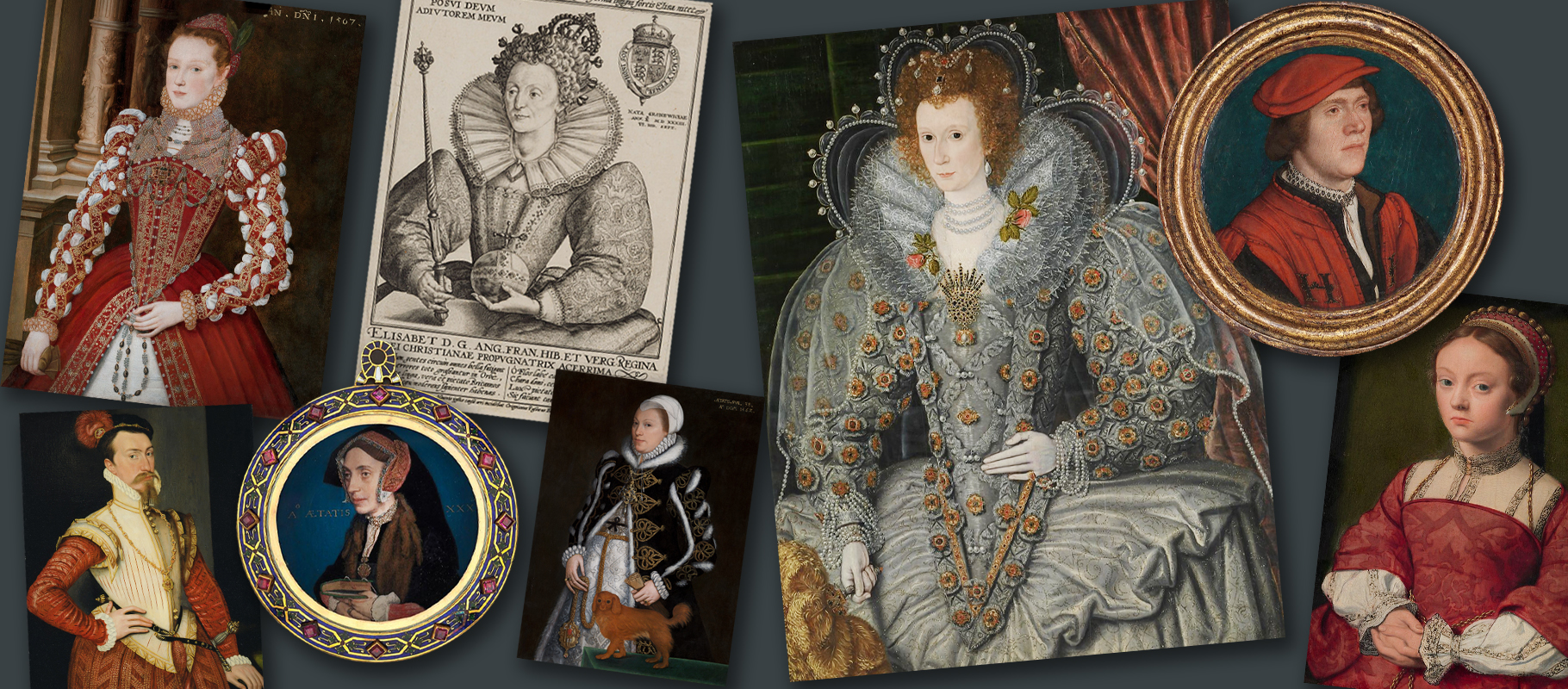 Above: a selection of 16th century portraits
Above: a selection of 16th century portraits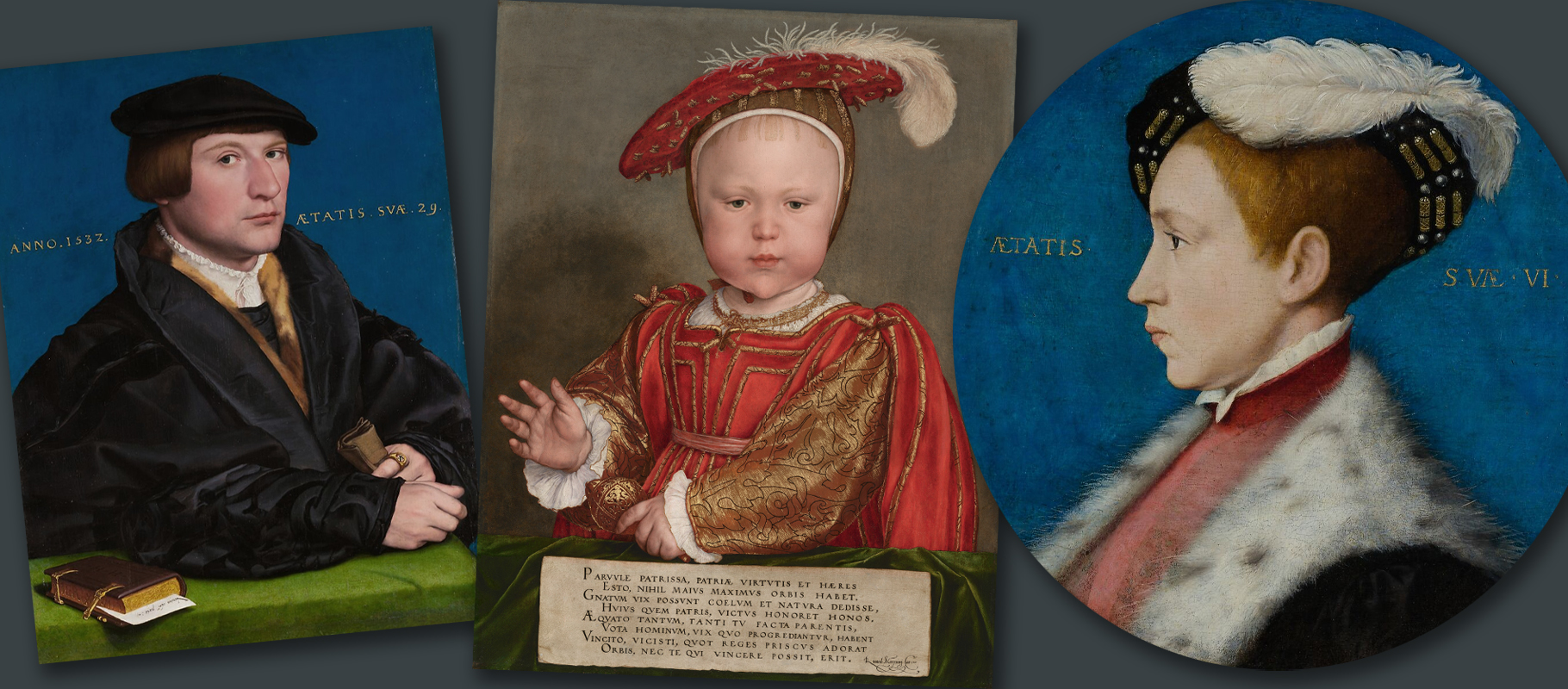 Above: three portraits by Holbein and his workshop
Above: three portraits by Holbein and his workshop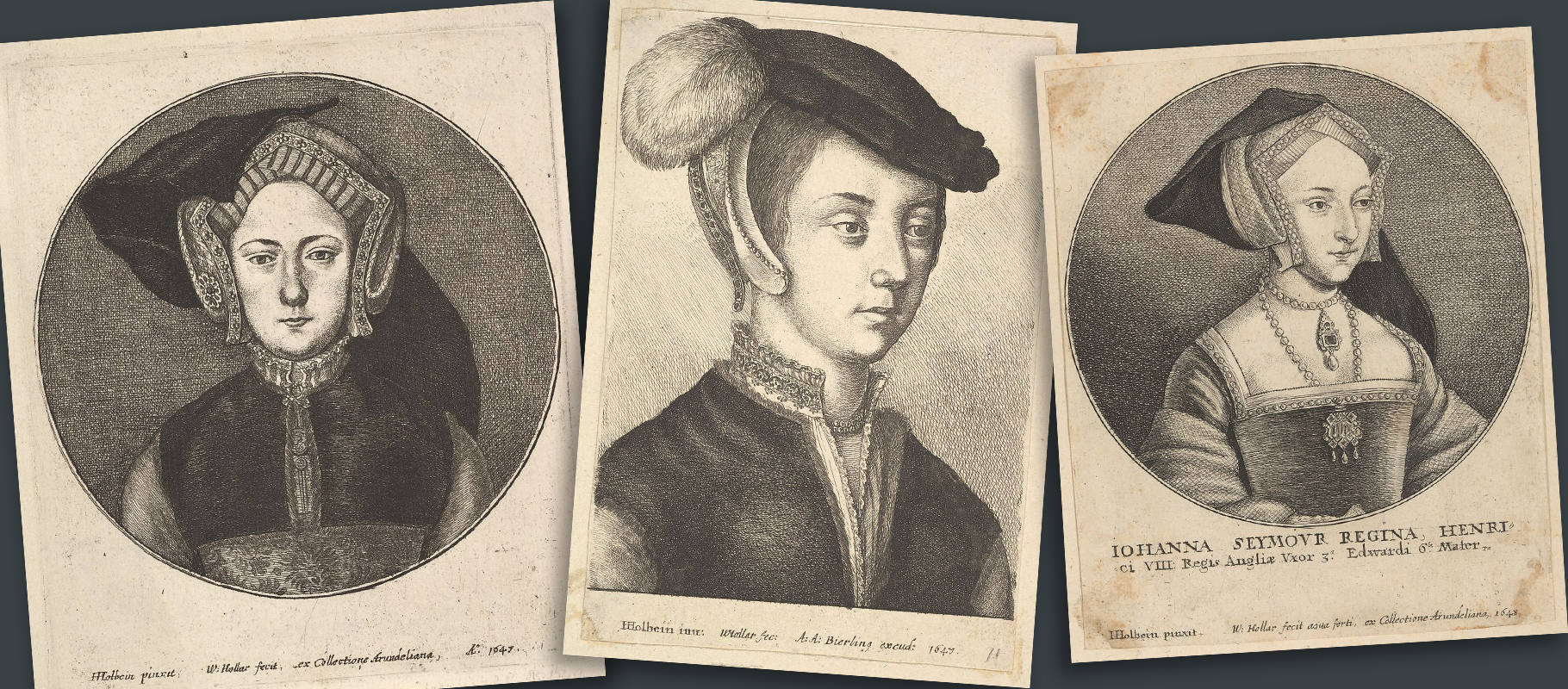 Above: a selection of engravings after Holbein
Above: a selection of engravings after Holbein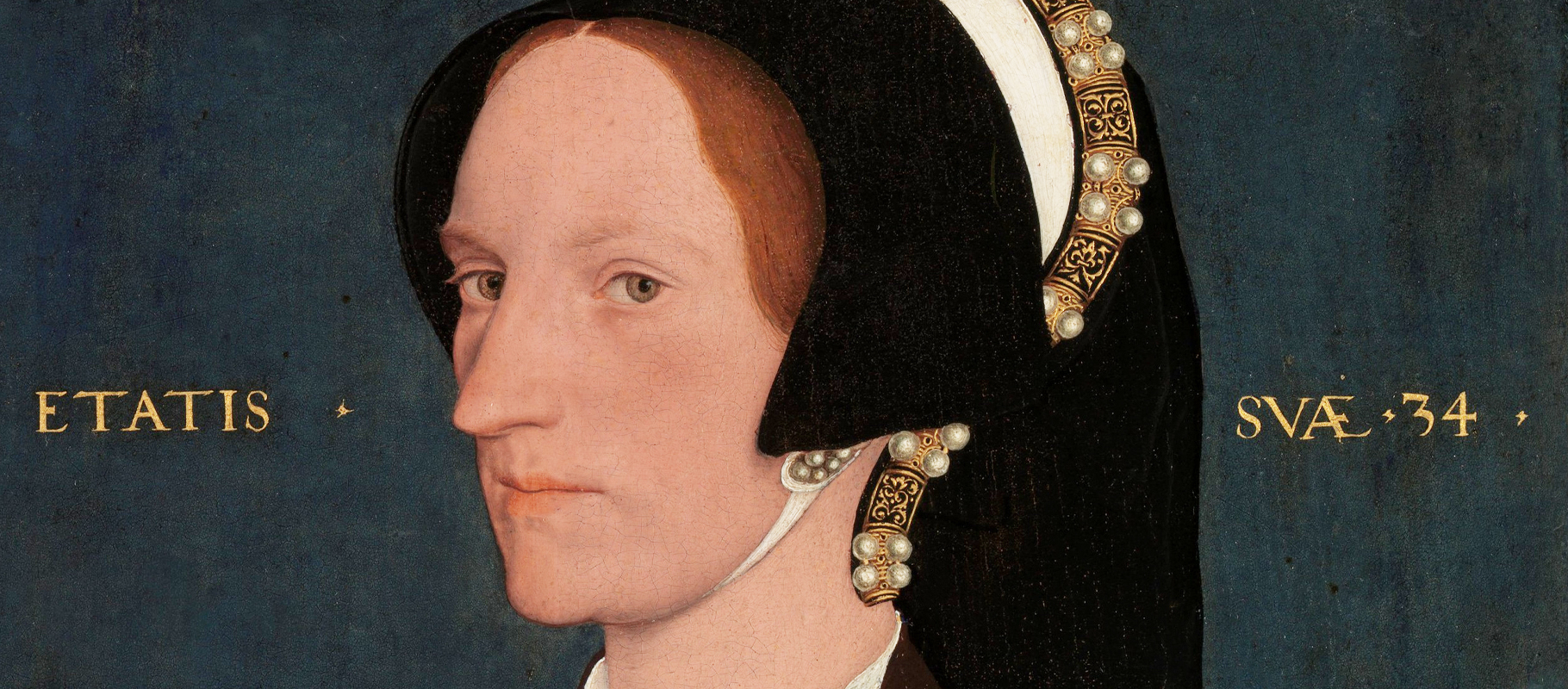 Above: a detail of a portrait from Holbein’s workshop
Above: a detail of a portrait from Holbein’s workshop Above: a detail from a portrait by Hans Eworth, 1565
Above: a detail from a portrait by Hans Eworth, 1565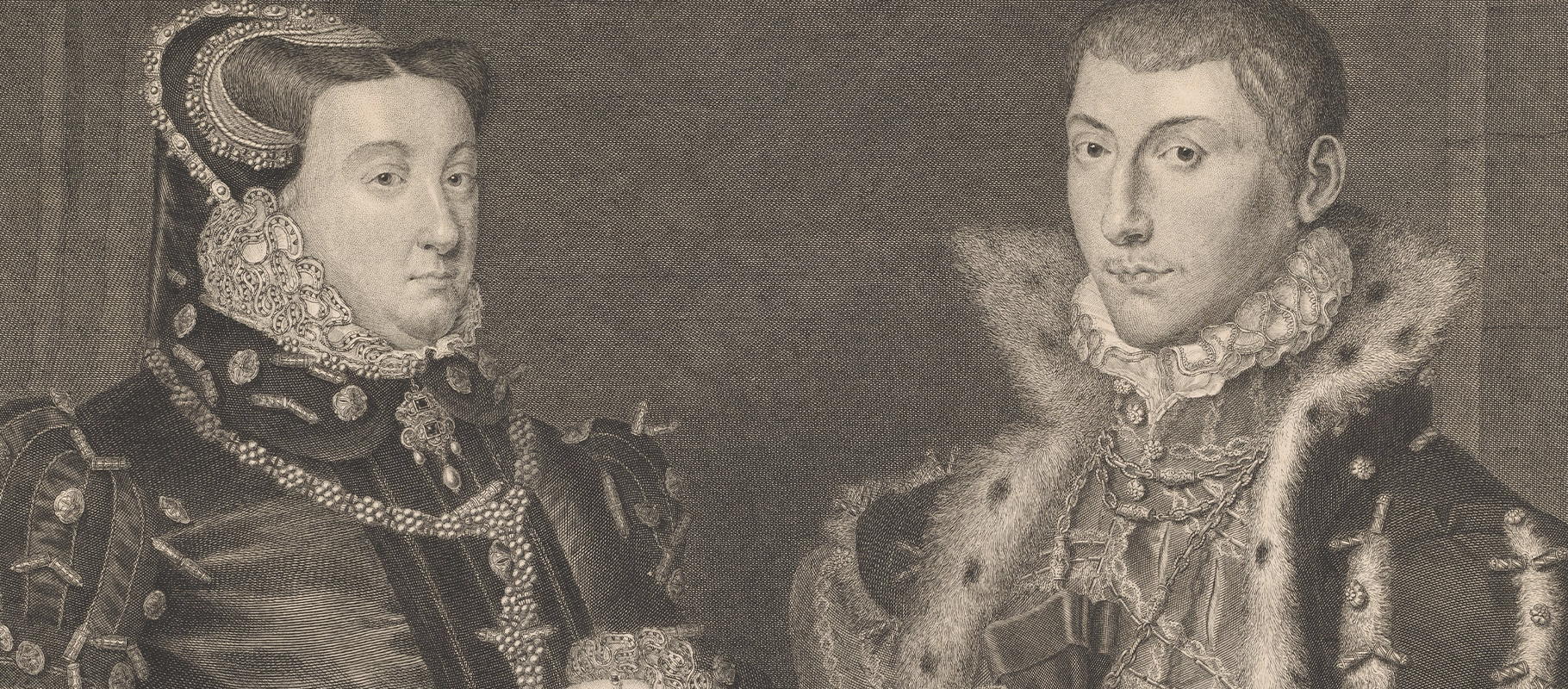 Above: an 18th century engraving after Lucas de Heere’s portrait of Mary and Gregory Fiennes
Above: an 18th century engraving after Lucas de Heere’s portrait of Mary and Gregory Fiennes Above: detail from a portrait of Henry Frederick, Prince of Wales, with Sir John Harington in the Hunting Field by Robert Peake the Elder, 1603
Above: detail from a portrait of Henry Frederick, Prince of Wales, with Sir John Harington in the Hunting Field by Robert Peake the Elder, 1603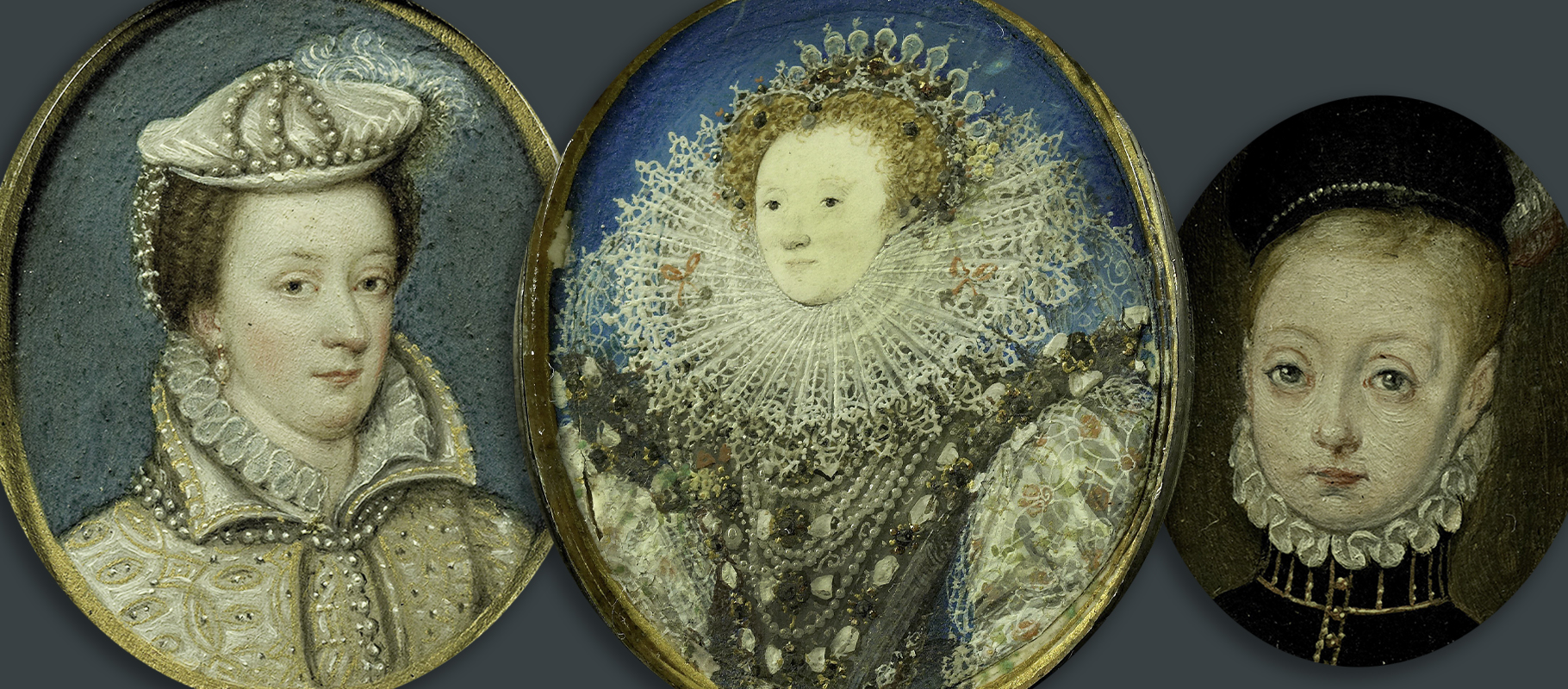 Above: a selection of 16th century miniatures including a portrait of Elizabeth I by Nicholas Hilliard
Above: a selection of 16th century miniatures including a portrait of Elizabeth I by Nicholas Hilliard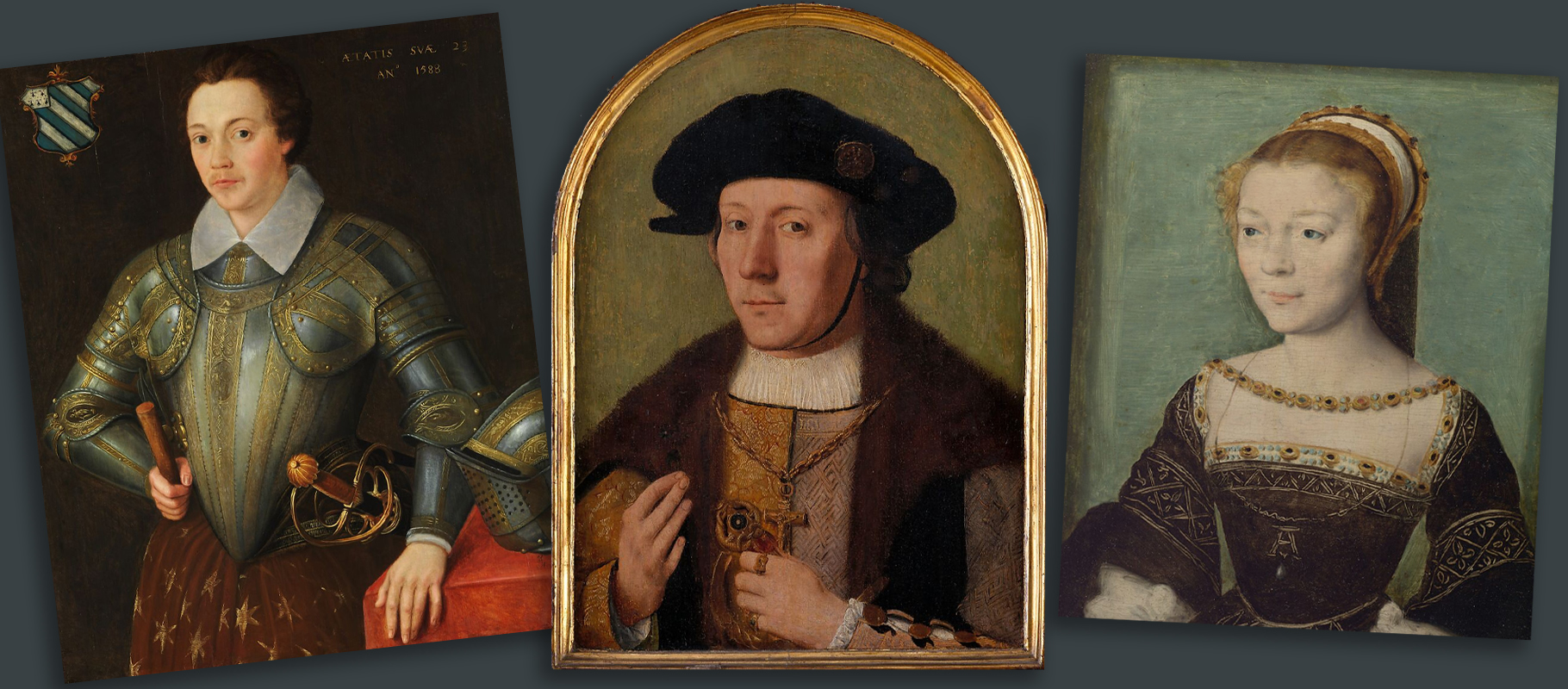 Above: a selection of 16th century portraits
Above: a selection of 16th century portraits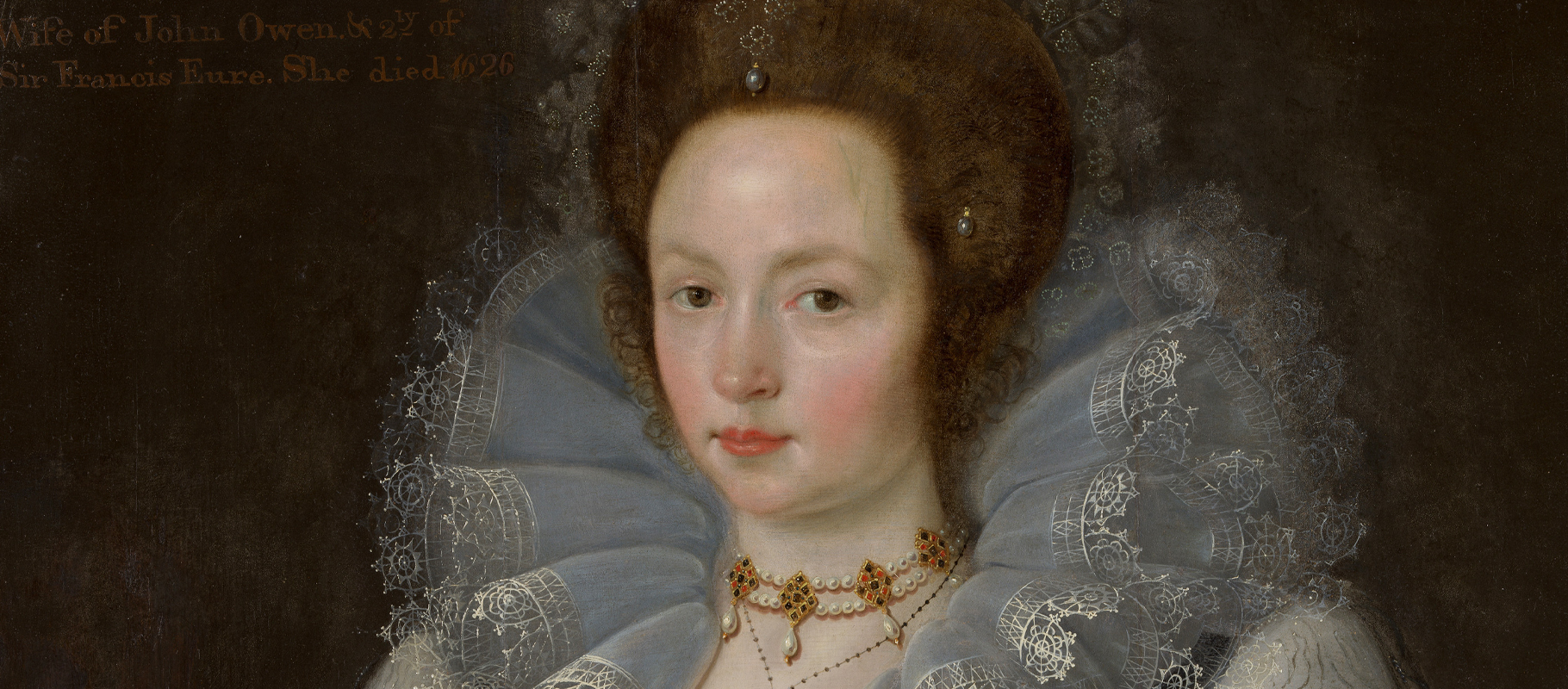 Above: detail from a portrait of Ellen Maurice by Marcus Gheeraerts the Younger, 1597
Above: detail from a portrait of Ellen Maurice by Marcus Gheeraerts the Younger, 1597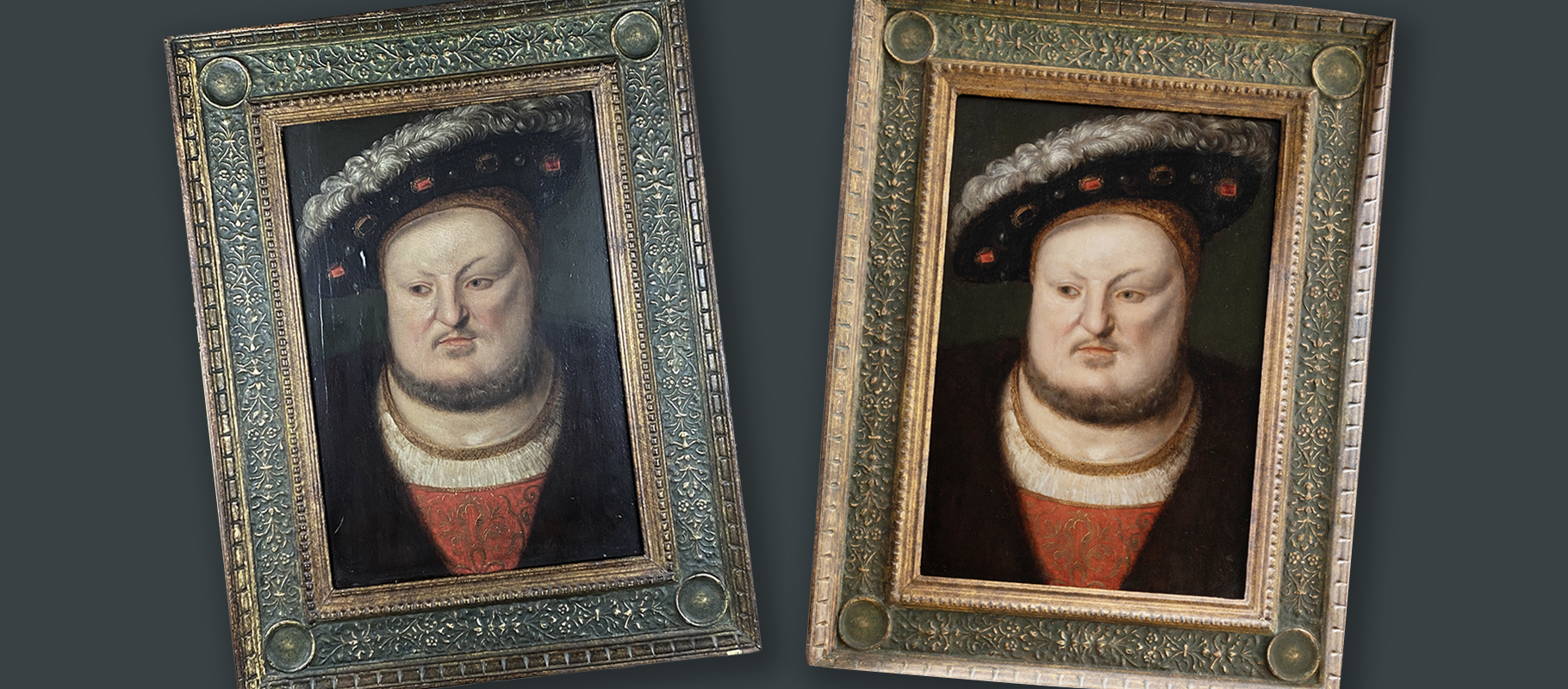 Above: a portrait of Henry VIII before and after restoration in our studio
Above: a portrait of Henry VIII before and after restoration in our studio




